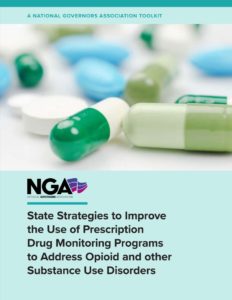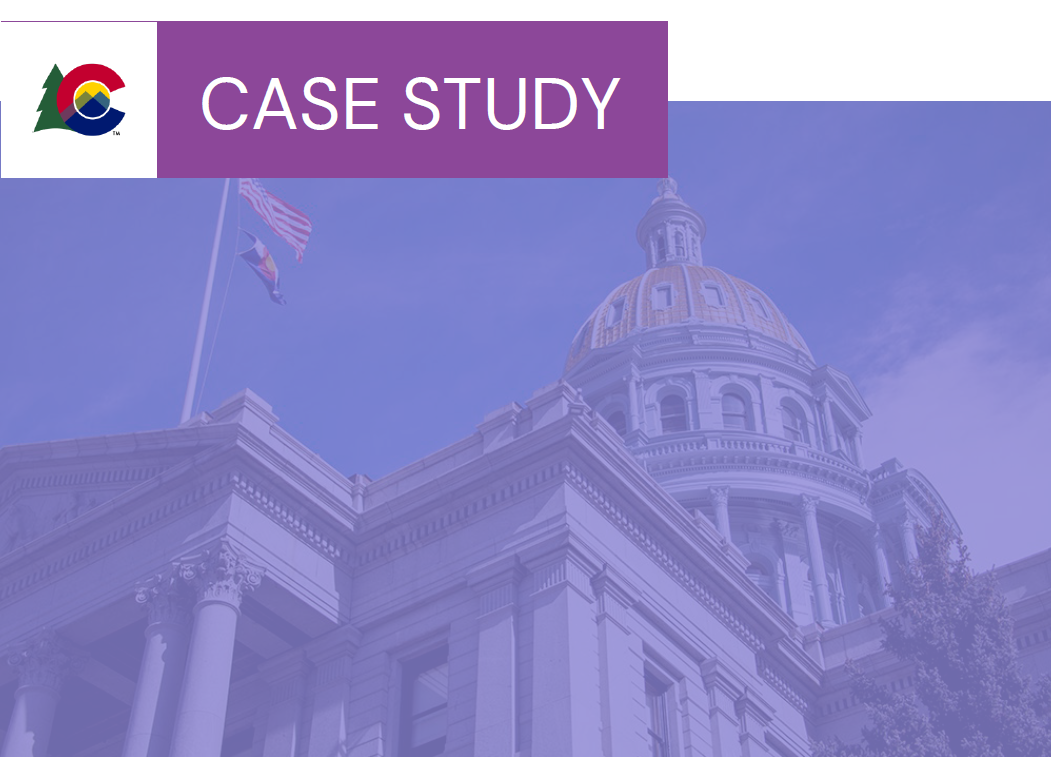Executive Summary
States have implemented many different strategies to address opioid use disorder/substance use disorders (OUD/SUD) and promote safe prescribing practices. One of these strategies is maintaining prescription drug monitoring programs (PDMPs) to inform clinical decisions and help support referrals to OUD/SUD treatment. PDMPs serve as information tools for many providers and public health and safety professionals who use the data to address OUD/SUD through improved clinical decision making, enhanced public health interventions, and faster detection of prescription fraud and diversion.
This toolkit was developed to highlight state practices in PDMP policy and identify opportunities to improve access and ease of use by health care providers. The toolkit includes a series of 10 considerations, highlighting different approaches states have taken to implement those strategies. In producing this toolkit, the National Governors Association Center for Best Practices (NGA Center) consulted with national and state experts, including through a virtual roundtable on March 31, 2020, that was largely comprised of state officials, to discuss how states have used their PDMPs as part of broader strategies to address OUD/SUD.
Because PDMPs are already widely adopted and utilized among states and providers, the considerations in this toolkit reflect opportunities for state leaders to share best practices and make enhancements to advance functionality and improve utilization as part of a broader data-driven approach to promote the health and wellbeing of state residents. It also serves as a primer for individuals interested in learning about how PDMPs can advance initiatives to address OUD/SUD.
Considerations for states in enhancing functionality and improving utilization of PDMPs
- Produce PDMP data analyses that support clinical decision-making by health care providers.
- Expand types of substances and overdose information tracked through the PDMP to identify potential overdoses or misuse of potentially addictive substances or dangerous drug combinations.
- Develop resources and tools that help providers make referrals to specialists to address pain management, misuse, and addiction.
- Permit staff of prescribers and dispensers and providers who have no prescribing authority to access PDMP data to facilitate clinical decision support and care coordination across health care providers.
- Provide chief medical officers and other medical coordinators of health care institutions with access to PDMP data to enhance oversight of prescribing and dispensing practices.
- Support use of PDMP data by public health authorities to identify hotspots, trends, and improve understanding of drug-related overdoses.
- Streamline provider access to PDMP data within health information technology platforms, such as electronic health records (EHR) systems and health information exchanges (HIEs) to facilitate providers’ efficient review of patient information from various sources.
- Increase use of PDMP data for cross-system data analyses to find patterns of behavior and identify factors that might contribute towards inappropriate prescription drug use, addiction, and overdose.
- Promote interstate data sharing for an improved picture of residents’ controlled substance prescription histories to identify potential doctor shopping and create opportunities for greater care coordination across state lines.
- Identify financial strategies to keep PDMPs sustainable and relevant with timely, accurate, comprehensive, and technologically actionable information as drug trends change over time.














